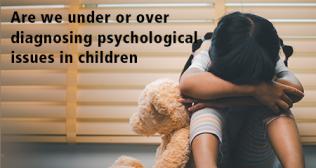
Gaslighting: Identifying the Signs and Strategies for Recovery
Gaslighting is a kind of emotional abuse done to an individual by making them believe things that are not correct and making them believe they have some mental illness. It is a kind of manipulation where the abuser breaks the trust one has in oneself. This blog makes you understand what is gaslighting, the signs of gaslighting, and recognize gaslighting behavior.
What is gaslighting:
Have you ever wondered what is gaslighting. Gaslighting is a manipulative behavior where an abuser gains psychological control over the victim by deliberately feeding wrong information that makes the victim question their sanity. They start suspecting their memory and perception. With the growth complex and potent manipulations by the abuser, the victim finds it difficult to identify the truth.
By misleading the victim, the abuser creates a sense of false narrative, making the victim question the perception of reality, memories, and thoughts. This stirs confusion, uncertainty, lack of confidence, and self-esteem in the victim's brain, making them lose their perception of the world and sanity. The abuser tries to exert power over the victim by controlling them. Gaslighting can occur in any relationship, such as family, friends, and colleagues, but is mostly seen in romantic relationships.
Origin of gaslighting:
Gaslighting originated from a play that was made into a film called Gaslight. The film portrays how a husband manipulated his wife by making mild changes to her environment. He makes her lose her sanity, abuses and controls her, and isolates her from her family and friends.
Eventually, the wife starts doubting her feelings, thoughts, perceptions, and memories. She also feels mentally disturbed, psychoneurotic, sensitive, and in a state of imbalanced state. As the movies showed the exact portrayal of toxic manipulations, psychologists started using the word gaslighting for emotionally abusive behaviors.
How does gaslighting start:
Gaslighting behavior starts very well on the first meet. The abuser praises the victim and confides in them some facts which are not known to others, consequently leading to the victim totally trusting the abuser. This is a kind of tactic used by the abusers known as love bombing. The more the abuser bewitches the victim, the more quickly the abuser begins the next step of manipulation.
The abuser or gaslighter starts lying about daily things and pours a lot of misinformation into the mind of the victim. If the victim questions the abuser, they may accuse the victim of lying. They confuse the victim by occasionally using positive reinforcements. They manipulate others in such a way that the family and friends believe that the victim is delusional or lying.
How to understand if one is gaslighted:
There are various gaslighting behaviors; however, some are included here to recognize if you are ever being gaslighted. The various signs of gaslighting include:
- Lying outrightly on subtle matters
- Wearing someone by humiliating or belittling them
- They make solving issues very difficult by retaining some information and holding back affection
- They do not try to solve the issue or find a solution to the issue; instead start counterarguments.
- They invalidate or dismiss others' feelings and downplay a situation.
- They do not accept their fault and instead start blaming the victim and guilt trip them for their behavior.
- They make the victim believe that they have done something terrible wrong and make them believe that they are thinking incoherently
- They deprive the victim of their mental support from their family and friends and isolate them.
- They make the victim feel unwell and incapacitate them
Tactics used by gaslighter:
The gaslighter uses the following tactics by forcing the victim into:
- Doubting their sanity and their mental health
- Making the victim feel morally sorry for acting the way the abuser has described
The targets for gaslighters:
The gaslighters or abusers do not pick up fights and do not target someone who can defend themselves. They take advantage of less powerful individuals who are incapable of defending themselves and those who have few resources.
Effects of gaslighting on the victim:
The power of gaslighting lies in the adverse effects on the victim due to the mental and emotional stress. This results in locking themselves in a circle of abuse. The gaslighting behavior results in the following effects on the victims.
- Questioning their sanity
- Losing confidence in the core beliefs and foundational values
- Mental health disorders like anxiety and depression
- The victim trusts the abuser to the level of believing themselves as mentally unstable or overly sensitive
Unintentional gaslighting:
Unintentional gaslighting is also possible, with the abuser not knowing that they are gaslighting the victim. The gaslighter controls the victim by taking control of their thoughts and manipulating the victim's behavior. This could happen because the abuser may have experienced the same in his childhood.
Recognizing a gaslighter:
It isn't easy to recognize a gaslighter directly. The signs of gaslighting can only be identified by the victim's behavior and mental state. Gaslighting behavior is commonly seen in domestic abusers, dictators, narcissists, and cult leaders. Anyone can become a gaslighter. Any individual who has a personality disorder, narcissistic behavior, or psychopathic attitude can become a gaslighter.
Gaslighters have a dual personality, presenting themselves with one behavior in front of the world and another to the victim. The abusers or gaslighters use their tactics in various relationships and make others believe what they do is correct. They manipulate the victims and think that if they seek out help, no one will believe them.
How to win over a gaslighter:
The signs of gaslighting shown by an individual are rigid to win over. However, few strategies can make the gaslighting behavior less likely to continue.
- Disengaging a gaslighter is the key to managing them. Despite seeming insensitive to others, it is advisable not to engage and withdraw as fast as possible from their conversation or relationship.
- Unresponsiveness to the gaslighter makes them feel the loss of power. This can be done by blocking contacts personally, on the phone, or any other social media platform.
- One has to be unresponsive to the gaslighting behavior despite their insults, accusations, demeaning, and harassment. This may be challenging, but patience can make you win the game.
- Speaking in phrases and a few sentences in the form of prewritten scripts and leaving no room for the gaslighter to argue with you makes it difficult for them as they will realize they will not get anything from you.
- The other sign of gaslighting is arguing until the victim's emotions are stirred up, leading to confusion and enraged behavior. This can be avoided by communicating crisply and clearly without falling prey to their tactics.
- The victim must protect themselves from gaslighting behavior by staying non-emotional in the relationship or a situation. They find pleasure in provoking a reaction by emotionally stirring the victim. Keeping the emotions out in a relationship is advisable by safeguarding them and not letting them play with your emotions.
Conclusion:
Gaslighting is manipulative behavior by the abuser, making the victim question their sanity. The gaslighter does this due to their emotional problems. Identifying and keeping such behaviors out of reach is necessary for proper mental health.



















